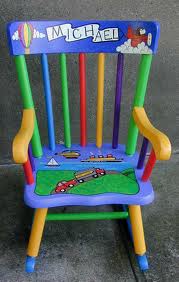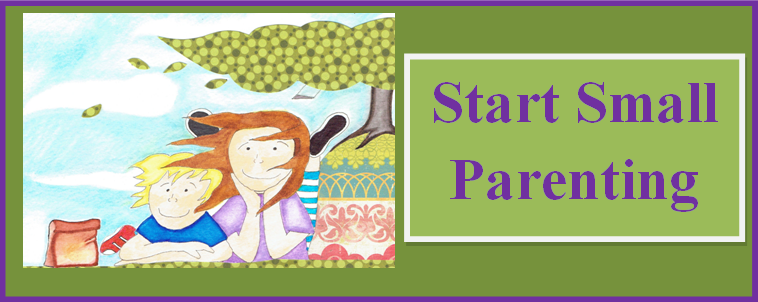 Neither.
Neither.
But often both are working too hard.
Parents are trying to adjust their parenting to every situation that arises. How exhausting. And kids are hardwired to take the reins if they can’t figure out who’s in charge. That’s exhausting for them because they don’t have the skills. All of this can create a tired, stressed family who aren’t having much fun.
I’m in my music room. A mother and 2 yr old daughter arrive early. The girl busts into the room with her shoes on. The mother tells her she has to take them off. The child ignores her. The mother picks up her child to take her out of the room, and the child starts screaming. I hear terse words come from the mother. She seems embarrassed and carries her daughter outside. When they return, the child is red-faced from tears and the mother looks beaten down. This kind of struggle continues throughout class.
Parenting CAN be easier.
Here are THREE ESSENTIAL ACTIONS you can start taking now to create a calmer, happier parent and child.
1. A Comes Before B
 In many kids’ bedrooms across America, there is a stencil or poster or book of the A, B, C’s. Parents are eager to teach the building blocks of our language. But the first two letters are also the building blocks of parenting. Very early on, a child can learn that A Comes Before B. That is, that one action or behavior needs to come before another. There are examples throughout the child’s life. Meal before Dessert. Bath before Storytime. Clean Room before Playdate. Homework before TV. Shoes Off before Music Class.
In many kids’ bedrooms across America, there is a stencil or poster or book of the A, B, C’s. Parents are eager to teach the building blocks of our language. But the first two letters are also the building blocks of parenting. Very early on, a child can learn that A Comes Before B. That is, that one action or behavior needs to come before another. There are examples throughout the child’s life. Meal before Dessert. Bath before Storytime. Clean Room before Playdate. Homework before TV. Shoes Off before Music Class.
Countless struggles can be addressed with these simple words. “A Comes before B.” And then the parent can insert the necessary behaviors.
Even a small child can begin to learn this. And as the child grows, this is helpful in understanding ELIGIBILITY. If A is not taken care of first, they are not eligible for B.
By using A Comes Before B consistently, each situation that arises becomes less of a challenge. The child sees the repetition of the theme. They come to expect it, just as they have come to expect that screaming will eventually break you down.
Ahhhh. It’ so much easier than addressing each topic, each situation, separately. Everyone will appreciate the ease.
2. Listen to My Voice on the First Time
“Stop climbing those stairs. Did you hear me? I said, stop climbing the stairs. Stop right now and come down here this instance. Don’t make me say it again.”
The repetition of small commands and the child’s seeming defiance of the requests can lead to a growing sense of parental frustration. Each experience builds on the rest as the child learns to ignore their parent’s voice until it often becomes the norm.
When you teach your child to listen to your voice on the first time, parenting gets a whole lot easier. But how to do this?
- Stop. Look. and Listen. You can teach our child to stop when they hear your voice. You then teach them to look right at you. This way you know you have your child’s full attention when you ask them to listen to your words. Just as you practice these steps every time you cross the street, it’s important to instill this for every day behavior.
- Watch Me – This game works best when children have reached a verbal stage. Sit across from your child. Both of you fold your hands in your lap or rest them on the knees. (This helps build self-control.) Instruct the child to watch your face. Count silently, but move your mouth. When you stop counting, see if they can tell you the last number.
- Eye Contact is a second step of the Watch Me game. Make eye contact. Have your child remain seated. As you get up and move around the room, see if they can keep eye contact with you the whole time. Not only does this help with tracking, it’s a great way to reinforce the need for them to pay attention to you.
- Practice. Now that you really have your child’s attention, you can reinforce listening to your voice on the first time with a fun practice step. Give them silly instructions which they do on the first time. Stick out your tongue. Touch your ear with your toe. Bring me an apple. Move around the room as we play the Stop, Look and Listen game. (My son called this Intersection.) Have your child do a movement (skip, hop, tip-toe, etc.) then Stop and freeze. Then they move their head on Look to look at you. When you say Listen, give your child a new movement to do.
3. Stop Their World
Your child is not behaving respectfully. What do you do? If your family values include the 3R’s – Respect, Responsibility, and Reliability – then sometimes all it takes is a reminder that it is their responsibility to respect you and the standards of your family. Interrupt what they are doing and talk in a soft but firm voice. Sometimes, though, more action is needed on the part of the parent.
- Come Sit By Me – As the parent, you don’t have to stop your world, but the child can’t continue with the disrespectful behavior. Have them come sit by you and help them find their self-control. Give them a simple direction to focus their attention – a deep breath, a moment of silence, hands on knees. Then they are more able to hear your instruction about their expected behavior so that it can become a teaching moment.
 Learning Chair – The Learning Chair provides a specific place where the child can practice self-control and reflect on recent behavior. You need to be very clear that the child is Not in Trouble. The Learning Chair is not punishment and should not be placed where it completely removes the child from the rest of the family. It is a chance to Stop Their World and create a pattern-interrupt. The instruction is for them to think about what you are asking them to do. The length of time can be as short as 2 minutes. A longer amount of time may be appropriate for an older child.
Learning Chair – The Learning Chair provides a specific place where the child can practice self-control and reflect on recent behavior. You need to be very clear that the child is Not in Trouble. The Learning Chair is not punishment and should not be placed where it completely removes the child from the rest of the family. It is a chance to Stop Their World and create a pattern-interrupt. The instruction is for them to think about what you are asking them to do. The length of time can be as short as 2 minutes. A longer amount of time may be appropriate for an older child.- Re-do the Scene – In our house, we call them Do-Overs. You provide a positive corrective experience by stopping the child’s negative world and giving them a chance to repeat the expected behavior. Parents sometimes need to be granted Do-Overs as well.
If your child is in a disrespectful pattern of ignoring you, then there is a bigger issue at hand. Since no real teaching can occur within this cycle, a larger pattern-interrupt is needed.
- Stop Their World – As in A Comes Before B, the child needs to be eligible before many enjoyable activities can take place. They are eligible when they are respectful. Running out and about in our busy world with a disrespectful child and pretending everything is okay leads to the already noted family exhaustion and much frustration. The child is begging for safety, which includes someone else being in charge. And the parent is begging for “good” respectful behavior. Both of these needs can be met long-term, but the most effective way to make a sudden change is to Stop the Child’s World.Let’s say you have a play date scheduled, or a park trip or ice cream store stop. This needs to be cancelled while the family gets back on track.
Let your child know that their basic needs will be met but for that afternoon, they will need to have quiet time and play on their own. They may cry and try to get you to play with them. Continue about your own work. Let them know they are safe and loved and help them to think about a specific way they can be more respectful. Or remind them that to be eligible they need to listen to your voice on the first time. After a period of time, devise situations where you can practice this in small steps. “It’s time to set the table. It’s respectful to listen to my voice and do as I ask the first time.” If the child refuses, remind them that they are not eligible for fun family outings until they have learned to be respectful.
IMPORTANT: Get this next part because it is both subtle and a game-changing paradigm shift: this is not punishment. It is a consequence that results from their own behavior.
Remember: When you try anything new with your child, it will take more than the first few times for them to understand what you want. Just as in teaching a child to cross the street, it’s important to give the technique some CPR:
Consistency
Patience
Repetition
As the parent, you might not get it right the first time either. Be kind with yourself as well.
The above tools will help create a Safe Environment where your child does not have to try to be in charge. You will not have to work as hard at parenting. Doesn’t that sound great?
Want to know more? I am going to dive deeply into these 3 topics and answer questions during a live free webinar – and you are invited.
Parenting Made Easy: 3 Tools For a Happier Family
with Annie Keeling, MFA
Tuesday, July 2
10 am/PT 1 pm/ET
Register by putting your name and email in the box below and I will send you the login information, a reminder the day of the event, and the occasional email to make your parenting easier.


Wonderful ideas! I think the Parenting Made Easy Webinar will be wonderful and hope many parents get a chance to experience it! It will be shared!